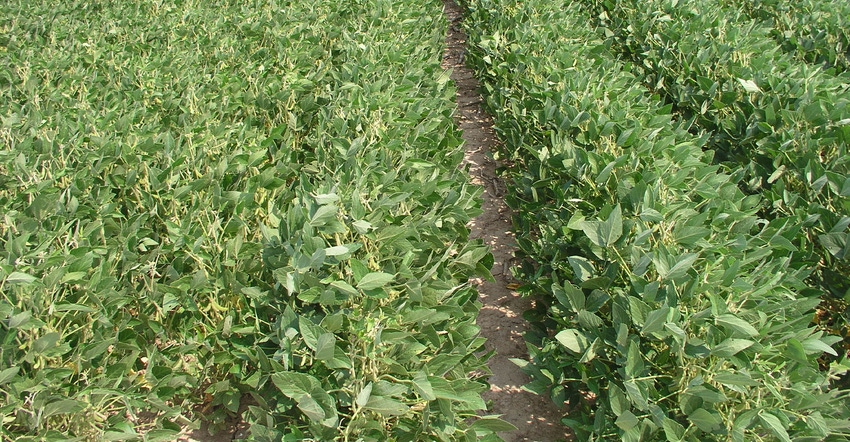June 18, 2019

Farmers may be able to boost yield in late-planted soybeans by making a few crop management adjustments.
Record-breaking wet weather set back soybean planting in May. University of Missouri Extension research shows average yield for soybeans planted in the third week of June drops by 25% compared with soybeans planted in early May.
Yield depends on captured sunlight, says MU Extension soybean specialist Bill Wiebold. Late-planted soybeans face a disadvantage because daylight periods shorten during seed filling. The length of the seed-filling period is shorter, and plants often are smaller with fewer nodes. Managing soybeans to increase light capture may improve yield potential, he says.
Wiebold suggests these key management options:
Plant in narrow rows. Narrow rows allow plants to capture available sunlight sooner in a shortened growing season. Wiebold tested row width and planting date in a two-year experiment in central Missouri. In his research, yields improved in 15-inch rows rather than 30-inch rows later in the season. Yields improved 8% in soybeans planted in mid-May. Yields improved by 14% when planted in 15-inch rows in the third week of June.
Drill. Wiebold found no yield difference between 15-inch row spacing and drilled soybeans in 7.5-inch rows in full-season soybeans. “However, as planting date gets pushed later into June, one might consider using a drill,” he says.
Increase seeding rate. Wiebold strongly recommends increasing seeding rates in late-planted soybeans. He found almost no yield increase in fields planted in early May with more than 120,000 plants per acre. However, he recommends a stand density of at least 150,000 plants per acre in late-planted soybeans. One word of advice when using grain drills: “Remember, drills are challenged to control seed depth and soil closure,” he notes. “You may want to increase seeding rate if using a drill for planting.”
Avoid compaction. Wiebold also urges patience to avoid long-term damage to fields. Soil conditions this year are likely to be less than optimal for planter operation. Carefully monitor soil conditions. Try to balance possible yield loss from additional planting delay with potential yield effects from soil compaction. “Carefully adjust the planter to reduce compaction near the seed and provide the best possible environment for early root growth,” he says.
Treat seed with fungicide. “Seed treatments, especially fungicides that protect against Pythium and other fungi, will also aid stand establishment and early vigor,” Wiebold says. “Because of a shortened season, rapid root growth and leaf production will help improve yield potential.”
Don’t change maturity group. Wiebold discourages changing maturity group unless planting is delayed into July. “Late-planted soybean plants may be smaller, and that reduces sunlight capture,” he says. “Early-maturing varieties that are not adapted to your location are less likely to produce the number of nodes and leaf area to maximize yield potential than adapted varieties.”
Source: The University of Missouri Extension, which is solely responsible for the information provided and is wholly owned by the source. Informa Business Media and all its subsidiaries are not responsible for any of the content contained in this information asset.
You May Also Like




